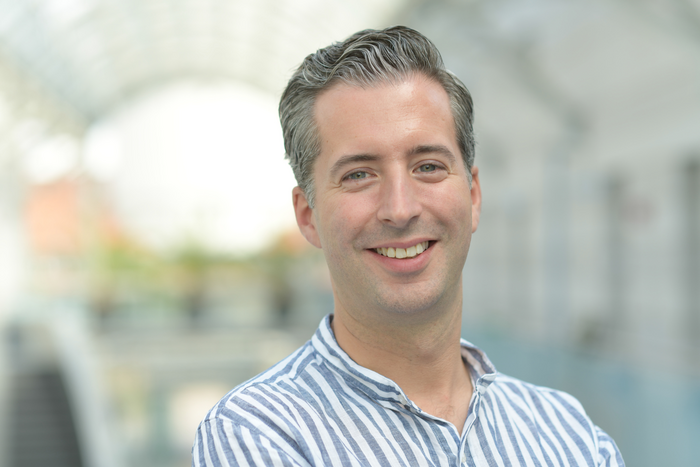In 2014, Professor Anton Henssen discovered something unusual in the cells of pediatric cancer patients: small rings of DNA, which meant that part of the genetic information was no longer packaged in the chromosomes as normal. It was very clear that the rings disturbed the rest of the genome so much that the children’s cells began to mutate.

Credit: Wiebke Peitz, Charité
In 2014, Professor Anton Henssen discovered something unusual in the cells of pediatric cancer patients: small rings of DNA, which meant that part of the genetic information was no longer packaged in the chromosomes as normal. It was very clear that the rings disturbed the rest of the genome so much that the children’s cells began to mutate.
Once he had made the discovery, Henssen (36) couldn’t stop thinking about it. A researcher and physician, Henssen has been leading the Emmy Noether Research Group “Genomic Instability in Pediatric Cancer” at the Experimental and Clinical Research Center (ECRC), a joint institution of Charité – Universitätsmedizin Berlin and the Max Delbrück Center for Molecular Medicine in the Helmholtz Association (MDC), since 2019.
The role of the rings
“When I began getting interested in the circular DNA and its role in the development of cancer, I was pretty much on my own,” says Henssen, who in addition to his research work also treats young cancer patients at the Department of Pediatric Oncology and Hematology at Charité. The field is now attracting more scientific interest, he says.
Henssen and his project, CancerCirculome, have been receiving support for roughly two years now, thanks to a Starting Grant from the European Research Council. The funding initiative Cancer Grand Challenges, which was founded in 2020 by the two largest funders of cancer research worldwide (Cancer Research UK and the National Cancer Institute, part of the National Institutes of Health in the US), is also aware of the possibly underestimated role of the tiny DNA rings. It chose the topic of extrachromosomal DNA, or ecDNA for short, as one of the nine challenges in its latest funding round.
Cancer Grand Challenges currently supports more than 700 researchers and advocates across 10 countries, representing 11 teams are supported to take on 10 of the toughest challenges in cancer research. On 16 June, 4 new teams were announced.
Berlin team to get £1 million
“When I saw that, I knew I wanted to participate in the challenge,” says Henssen, who on June 1 began a Mildred Scheel Professorship funded by German Cancer Aid at Charité. He explains that just a handful of groups are working on ecDNA worldwide. Now the team he is part of – which brings together researchers from the US, the UK, and Germany and is led by Professor Paul Mischel of Stanford Medicine in California – has won funding from Cancer Grand Challenges for its project entitled eDyNAmiC (extrachromosomal DNA in Cancer). The team will receive £20 million over the next five years. Roughly one million of that will be available to Henssen and his team in Berlin.
Henssen says scientists now know that nearly a third of all childhood and adult tumors have DNA rings in their cells and that these tumors are almost always highly aggressive: “Now we want to find out what exactly makes the rings so dangerous, how they form, and how we can slow them down – so that we can develop more effective therapies.” Biologists and physicians aren’t the only ones tackling this challenge; mathematicians and computer scientists are also involved.
The prospect of brand-new therapies
Henssen and his Berlin team, which also includes researchers from the Berlin Institute of Health at Charité (BIH), plan to start by looking at the structure of the rings in more detail to find out how their DNA is packaged in histones and other proteins, and how their gene expression is regulated. “It’s possible that changes in gene expression mean the rings help the tumors become resistant to existing therapies,” says Henssen.
It’s not surprising that Henssen is delighted to see his once “niche” topic garnering such attention and support: “It’s the best thing that could have happened, as far as I’m concerned.” He now hopes that it won’t be too long before he can help his young patients – who have their whole lives ahead of them – with a novel therapy that attacks the rings and cause the fatal tumors to disappear.
Joint press release by Charité – Universitätsmedizin Berlin and the Max Delbrück Center for Molecular Medicine
Further information
Press release about the Cancer Grand Challenges
The eDyNAmiC team
The DNA artist – a portrait of Anton Henssen
Henssen Lab at the ECRC
Department of Pediatric Oncology and Hematology at Charité
Anton Henssen honored with Berlin science award
Anton Henssen receives ERC Starting Grant




